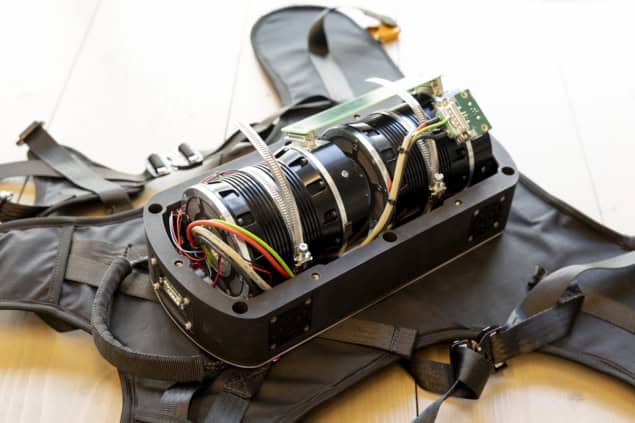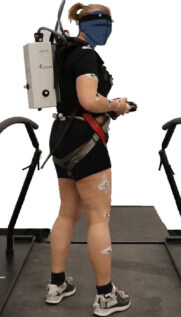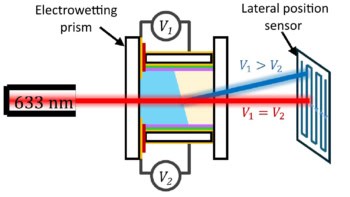
A robotic backpack equipped with gyroscopes can enhance stability for people with severe balance issues and may eventually remove the need for mobility walkers. Designed to dampen unintended torso motion and improve balance, the backpack employs similar gyroscopic technology to that used by satellites and space stations to maintain orientation. Individuals with the movement disorder ataxia put the latest iteration of the device – the GyroPack – through its paces in a series of standing, walking and body motion exercises.
In development for over a decade, GyroPack is the brainchild of a team of neurologists, biomechanical engineers and rehabilitation specialists at the Radboud University Medical Centre, Delft University of Technology (TU Delft) and Erasmus Medical Centre. The first tests of its ability to improve balance performance with ataxia-impacted adults, described in npj Robotics, produced encouraging enough results to continue the GyroPack’s development as a portable robotic wearable for individuals with neurological conditions.
Degenerative ataxias, a variety of diseases of the nervous system, cause progressive cerebral dysfunction manifesting as symptoms including lack of coordination, imbalance when standing and difficulty walking. Ataxia can afflict people of all ages, including young children. Managing the progressive symptoms may require lifetime use of cumbersome, heavily weighted walkers as mobility aids and to prevent falling.
GyroPack design
The 6 kg version of the GyroPack tested in this study contains two control moment gyroscopes (CMGs), which are attitude control devices that control orientation to a specific inertial frame-of-reference. Each CMG consists of a flywheel and a gimbal, which together generate the change in angular momentum that’s exerted onto the wearer to resist unintended torso rotations. Each CMG also contains an inertial measurement unit to determine the orientation and angular rate of change of the CMG.
The backpack also holds two independent, 1.5 kg miniaturized actuators designed by the team that convert energy into motion. The system is controlled by a laptop and powered through a separate power box that filters and electrically separates electrical signals for safety. All activities can be immediately terminated when an emergency stop button is pushed.
Lead researcher Jorik Nonnekes of Radboud UMC describes how the system works: “The change of orientation imposed by the gimbal motor, combined with the angular momentum of the flywheels, causes a free moment, or torque, that is exerted onto the system the CMG is attached to – which in this study is the human upper body,” he explains. “A cascaded control scheme reliably deals with actuator limitations without causing undesired disturbances on the user. The gimbals are controlled in such a way that the torque exerted on the trunk is proportional and opposite to the trunk’s angular velocity, which effectively lets the system damp rotational motion of the wearer. This damping has been shown to make balancing easier for unimpaired subjects and individuals post-stroke.”
Performance assessment

For the study, 14 recruits diagnosed with degenerative ataxia performed five tasks: standing still with feet together and arms crossed for up to 30 s; walking on a treadmill for 2 min without using the handrail; making a clockwise and a counterclockwise 360° turn-in-place; performing a tandem stance with the heel of one foot touching the toes of the other for up to 30 s; and testing reactive balance by applying two forward and two backward treadmill perturbations.
The participants performed these tasks under three conditions, two whilst wearing the backpack and one without as a baseline. In one scenario, the backpack was operated in assistive mode to investigate its damping power and torque profiles. In the other, the backpack was in “sham mode”, without assistive control but with sound and motor vibrations indistinguishable from normal operation.
The researchers report that when fully operational, the GyroPack increased the user’s average standing time compared with not wearing the backpack at all. When used during walking, it reduced the variability of trunk angular velocity and the extrapolated centre-of-mass, two common indicators of gait stability. The trunk angular velocity variability also showed a significant reduction when comparing assistive to sham GyroPack modes. However, the performance of turn-in-place and perturbation recovery tasks were similar for all three scenarios.

Wearable scanner measures brain function in people on the move
Interestingly, wearing the backpack in the sham scenario improved walking tasks compared with not wearing a backpack at all. The researchers attributed this to possibly more weight in the torso area improving body stabilization or to a placebo effect.
Next, the team plans to redesign the device to make it lighter and quieter. “It’s not yet suitable for everyday use,” says Nonnekes in a press statement. “But in the future, it could help people with ataxia participate more freely in daily life, like attending social events without needing a walker, which many find bulky and inconvenient. This could greatly enhance their mobility and overall quality of life.”



